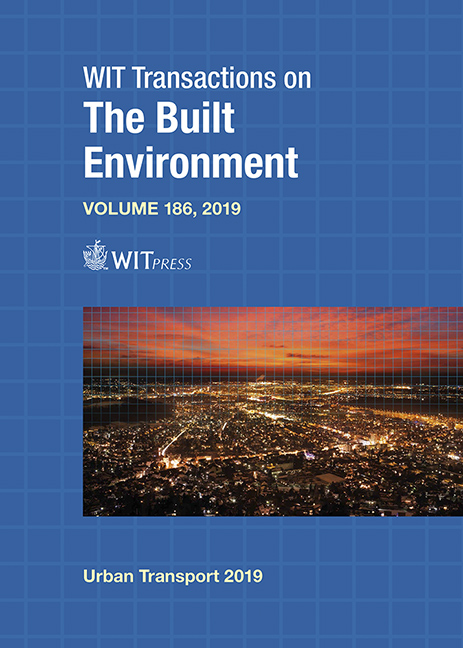SENIOR TOURISTS’ PERCEPTIONS OF BUS STOP ENVIRONMENTS USED IN COLLABORATIVE DESIGN
Price
Free (open access)
Transaction
Volume
186
Pages
12
Page Range
121 - 132
Published
2019
Size
291 kb
Paper DOI
10.2495/UT190111
Copyright
WIT Press
Author(s)
MANUELA PIRES ROSA, JOSÉ DA CRUZ LOPES
Abstract
Presently, universal accessibility is seen as an attribute of sustainable cities and territories, as it contributes to the quality of built environments, friendly environmental behaviors and social inclusion. Accessible built environments are required; so urban spaces, buildings, transport vehicles, information technology communication and services must include the process of “Age Sensitive Design” that attends to ageing and considers the perceptions of elderly people, who tend to have mobility, vision, hearing and cognitive issues or problems. Active ageing requires that there be an accessible tourism strategy, where the conditions related with elderly peoples’ mobility are important. The research project Accessibility for All in Tourism (ACCES4ALL) focuses on modal interfaces that are designed to be age friendly. Its main objective is to develop a pilot study: an accessible, smart and sustainable bus stop to be located at Faro International Airport. The layout is beyond the consideration of international technical norms and considers human diversity. The design process is collaborative, focusing on the users’ needs. It is a humanized process that requires an integrated team of civil engineering, architecture, geography, design, information, and communication and tourism professionals, who consider senior tourists’ perceptions of bus stop environments. A questionnaire was developed for the elderly tourist aged 60 or over, about their mobility and perceptions of bus stop environments, and the importance of some attributes for their mobility. This paper describes some results of the ACCES4ALL project that indicate elderly tourists have the perception of an accessible bus stop’s attributes, mainly in urbanistic aspects: sidewalks and bus stops with barrier-free space, non-slip surfaces, well lit, with soft ramps. They consider it important to have shelters with places to rest. Most consider that tactile and chromatic markings, QR (quick response) codes and near field communication (NFC) technology are not important for their mobility.
Keywords
accessibility, age sensitive design, bus stop, collaborative design, disability, elderly people, accessible tourism, sustainable tourism, tourism





